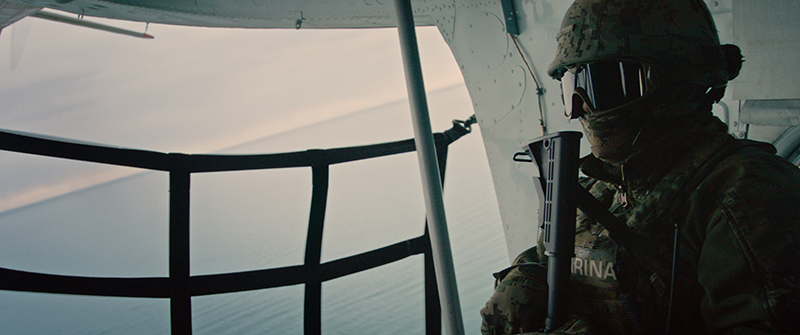Sundance Film Review: Sea of Shadows
Sundance
Sea of Shadows
Sundance Film Festival
Director: Richard Ladkani
Sea of Shadows presents the grave, complex problem of illegal fishing in the Sea of Cortez for the endangered fish totoaba. This multifaceted issue far transcends the limits of this review, which makes Sea of Shadows all the more crucial of a film to watch for those who can. In a nutshell, the main casualty of this hunt is the vaquita, the world’s smallest whale species. There are fewer than 15 vaquitas that remain in existence, and Sea of Shadows conveys that its extinction will have dire effects on the ocean’s ecosystem. Protecting them, however, poses challenges at every turn for those fighting illegal totoaba fishing.
The documentary starts by explaining that Chinese traffickers believe that the bladders of totoaba, buche, have “special healing powers.” They sell the buches for exorbitant amounts, and have essentially contracted Mexican cartels to oversee and run the illegal fishing of totoaba. The cartels use environmentally unfriendly nets in order to meet the demand. In addition to hordes of sea turtles, sharks, rays and other oceanic wildlife, vaquitas become ensnared in these nets due to their small size. As is unfortunately common in Mexico, the cartels have paid off authorities at various levels so that their hunt for totoaba may continue, despite the illegal nature of their operations. What’s more, they’ve compromised the enterprise of legal fisherman, who also risk their lives in removing the cartels’ hazardous nets.
Sea of Shadows depicts one organization, Sea Shepherds, who removes the nets and tracks illegal fisherman with the help of the Mexican navy. Armed with only a drone, they determine the coordinates of nets and remove them one by one—along with carcasses of myriad sea life. Meanwhile, VaquitaCPR seeks out vaquitas in an endeavor to safeguard them in a refuge until the illegal-fishing issue can be dealt with. Although, their marine biologists witness that the vaquita is particularly ill-suited for captivity, which invokes the question of whether it’s better for them possibly to die in captivity or to face certain death at the hands of the cartels and traffickers.
Andrea Crosta of intelligence team Elephant Action League and Mexican journalist Carlos Loret de Mola of Televisa have spearheaded action to hold accountable both Mexican authorities and the totoaba-fishing culprits. Local populations of San Felipe—the hub of totoaba fishing—have sided with the illegal fishermen and cartels, believing that the local fishing industry and, thus, getting food on the table has been compromised by efforts to preserve the vaquita. It’s a valid counter to the concerns of Sea of Shadows, and its fair, balanced depiction underscores how horribly self-serving the orchestrators of this scheme are.
Sea of Shadows feels urgent. It’s one of those films/pieces of media that unveils an issue that many will still not see, despite the waves that it will make at a festival as established and well-known as Sundance. One aspect that I wish that the film explained is the vaquita’s place in the ocean’s ecosystem—not to question the validity of its aims, but more so that it would provide a more complete picture of the stakes. It succeeds, however, in demonstrating with the footage of Vaquita CPR that even finding a vaquita is a big undertaking, so it may also not be completely known.
Sea of Shadows is a well-paced documentary. The quality of the shots are melancholically beautiful as well, suffice it to say. Each of the personages that it represents supplement the scope of the issue and facilitate the film’s narrative. Though I’ve discussed some of the fundamental premises here, there’s much to bee seen in this sadly necessary documentary. Sea of Shadows definitely isn’t a feel-good film, and it’s well-done and important that we become aware of what it shows us. –Alexander Ortega
Showtimes:
Jan. 28 // 12:00 p.m // Temple Theatre
Jan. 31 // 6:30 p.m // The Ray Theatre
Feb. 1 // 6:00 p.m // Tower Theatre
Feb. 2 // 12:00 p.m // Holiday Village Cinema 2
Read more of SLUG‘s comprehensive coverage of the 2019 Sundance Film Festival.
